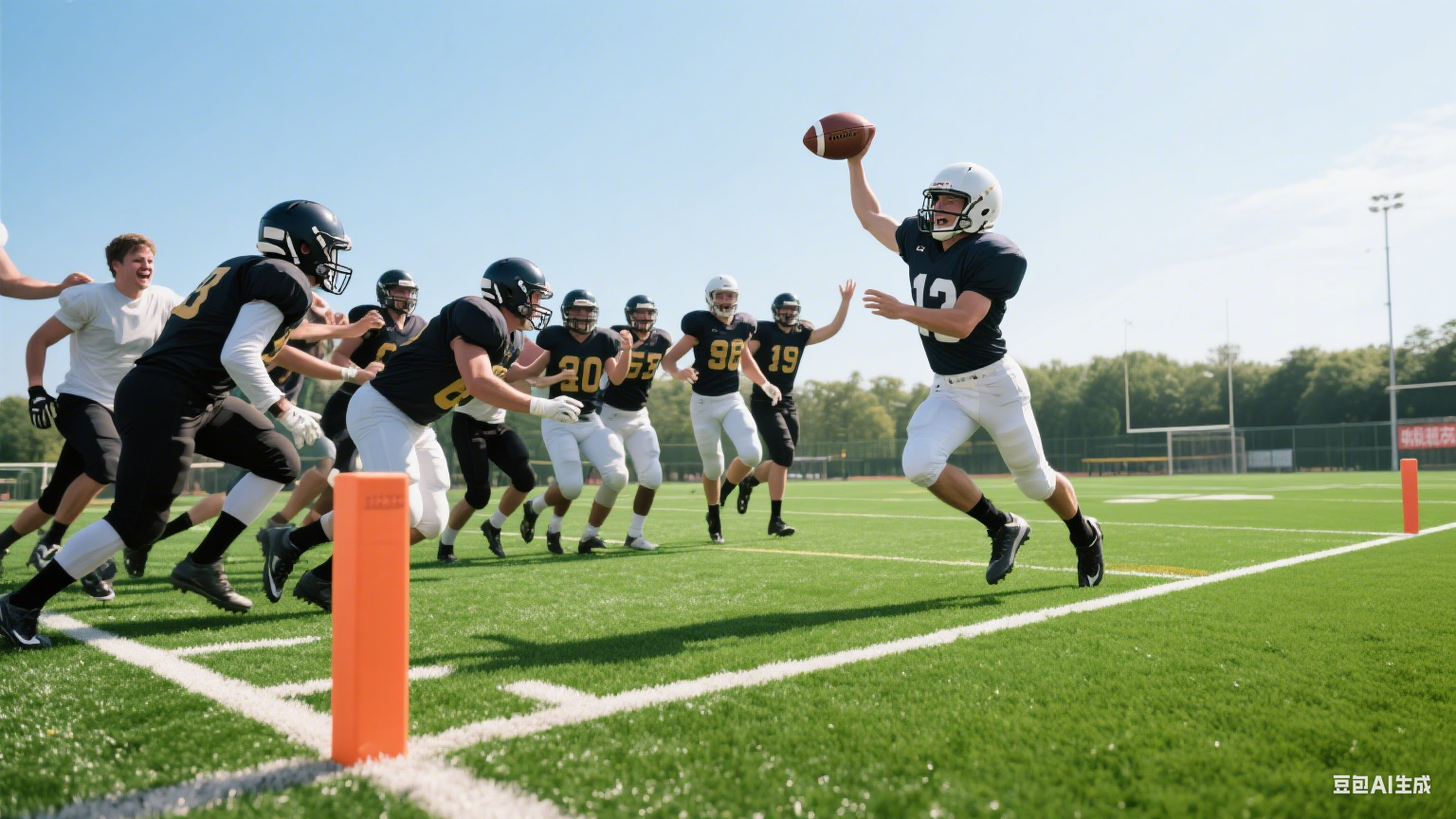
In modern sports field construction, surface resistance and athlete experience are critical to performance, injury prevention, and overall playability. Compared to traditional infilled turf, non-infill systems—particularly those developed by VivaTurf—offer significant, multi-dimensional advantages rooted in engineering innovation and verified by real-world performance. The following analysis explores these benefits across four key areas: technical principles, performance stability, athletic feedback, and long-term consistency.
1. Stable Surface Resistance: From "Unpredictable" to "Controlled"
Traditional Infilled Turf: The Pain of Resistance Fluctuation
Infilled turf relies on quartz sand and rubber granules to provide surface resistance. However, these particles shift during use, leading to inconsistent resistance:
Resistance Variability Due to Particle Movement:
When a football player stops abruptly and encounters a buildup of infill underfoot, sudden increased resistance may overload the knees.
If infill is missing in a certain spot, the underfoot becomes too soft, increasing the risk of ankle sprains.
In tennis, displaced infill affects bounce regularity, disrupting ball tracking and timing.
Loss of Surface Flatness Over Time:
In high-traffic zones (e.g., the inner curve of running tracks), infill tends to shift outward, creating sloped or uneven areas.
This variation forces athletes to adjust their stride and muscle activation, raising fatigue and injury risk.
VivaTurf Non-Infill Turf: Predictable Resistance Through Design
3D-Shaped Yarn Geometry (e.g., Y-, M-shaped profiles):
The structured design increases inter-fiber friction, allowing the turf to self-support without infill.
During high-intensity moves—such as rugby tackles or quick changes of direction—consistent resistance ensures stable footing, improving power transfer and reducing missteps.
Eco-Mechanical Backing:
The base layer securely anchors the fibers and transmits ground force response without delay.
In basketball, this reduces lag between action and resistance feedback, making movement more fluid.
Data Comparison:
Lab tests show that traditional infilled turf shows up to ±30% resistance fluctuation across 100 rapid movements, while VivaTurf non-infill turf maintains variations within ±5%—comparable to natural grass.
2. Enhanced Athletic Experience: From “Surface Limitations” to “Performance Enabler”
Traditional Turf: Hardness and Disconnection
Hard, Unforgiving Foot Feel:
Infill granules are rigid, and long-term running can cause foot fatigue or even tendonitis during endurance sports like marathon training.
Separated Ground Feedback:
Athletes often feel the granular infill first and the turf fibers second, resulting in a “layered” and unnatural touchpoint.
Non-Infill Turf: Dynamic Surface That Moves With the Athlete
Biomechanically Tuned for Natural Grass Feel:
The turf mimics the density and elastic modulus of natural grass.
Fibers bend with foot pressure, providing a “wrap-around” feel that improves comfort and ball control.
In football, stopping the ball on non-infill turf reduces bounce-back force, improving control accuracy by up to 15%.
Built-in Shock Absorption:
The combined fiber and backing system absorbs over 30% of landing impact (vs. 10–15% in infilled systems).
Volleyball players experience reduced knee pressure upon landing, lowering the risk of meniscus wear.
Multi-Sport Compatibility:
Unlike traditional turf that requires infill thickness adjustments for different sports, non-infill turf offers uniform resistance across all activities.
A school field used for both football and basketball provides a consistent feel, reducing the need for athlete re-adaptation.
3. Impact on Athletic Performance: From “Reactive Adjustment” to “Proactive Execution”
Traditional Turf: Technical Limitations and Psychological Burden
Interrupted Rhythm:
Sudden resistance spikes during acceleration disrupt stride patterns.
In track and field, sloped infill on curves alters body tilt and arm-leg coordination.
Increased Cognitive Load:
Athletes remain alert to unpredictable surface behavior instead of focusing on technique.
A baseball player may reduce sprint speed on bases due to concerns about uneven infill zones.
Non-Infill Turf: Precision, Confidence, and Energy Efficiency
Improved Movement Continuity:
Stable resistance enables athletes to perform confidently and without hesitation.
Hockey players report a 10–20% increase in controlled dribbling speed and lower error rates when switching direction.
Optimized Energy Use:
Infilled turf’s irregular resistance forces athletes to expend 15% more energy adjusting balance.
On non-infill turf, more energy goes into core performance.
Marathon runners trained on VivaTurf report 5–8 bpm lower heart rates over the same distance.
Real-World Case Study:
A professional football club using VivaTurf non-infill fields recorded a 1.2 km increase in average sprint distance per match.
Field-related errors (miscontrolled stops, slips) dropped by 40%.
Coaches attribute faster tactical transitions to stable resistance.
4. Consistency Over Time: From “Frequent Maintenance” to “Long-Term Reliability”
Traditional Turf: Maintenance Interruptions and Degradation
Infill Loss Over Time:
Weather and play cause infill loss, requiring top-up every 6 months.
Without maintenance, resistance drops as fiber support declines—creating a “spongy” feel.
On tennis courts, bounce height can drop by over 20%.
Disruptive Maintenance Cycles:
Re-infill requires closing the field for 3–5 days.
Mixed old and new infill leads to temporary resistance inconsistency.
Non-Infill Turf: Engineered for Enduring Performance
No Infill, No Degradation:
VivaTurf promises <3% resistance fluctuation over 8+ years of use.
Athletes don’t need to “relearn” aging fields.
Quick Cleaning, Continuous Play:
No need to groom or decompact infill.
Simple water rinsing removes debris, cutting cleaning time by 50%.
Fields are always ready for use.
Summary Table: Key Performance Differentiators
| Dimension | Traditional Infilled Turf | VivaTurf Non-Infill Turf |
|---|---|---|
| Resistance Consistency | High fluctuation (±30%), infill-dependent | Stable (±5%), fiber-supported |
| Foot Feel | Hard, gritty, layered | Natural, cushioned, integrated |
| Athletic Performance | Disrupted rhythm, high error risk, energy drain | Improved accuracy, reduced errors, better endurance |
| Maintenance & Consistency | Infill top-ups every 6 months, field downtime | Zero infill, 8+ years of stable performance |
Through technological innovation, VivaTurf’s non-infill turf addresses core limitations of traditional systems. With stable resistance, biomimetic foot feel, enhanced athlete performance, and long-term reliability, it offers not only a safer playing environment but also a strategic edge for sports organizations worldwide. VivaTurf’s non-infill system isn’t just a surface—it’s an upgrade in every dimension of the athlete’s journey.
